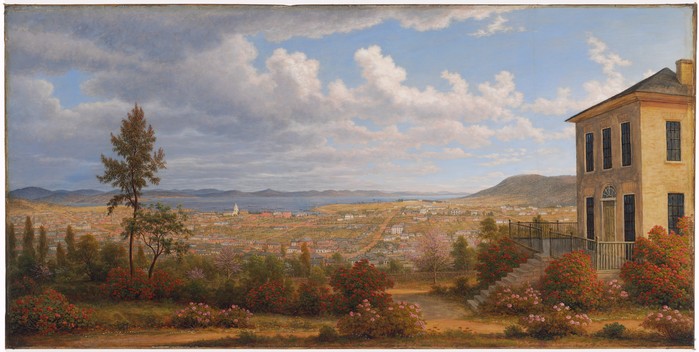
Hobart Town, taken from the garden where I lived
1832
Oil on canvas
Donated by Sir William Dixson, 1938
DG 6
Oil on canvas
Donated by Sir William Dixson, 1938
DG 6
John Glover was probably the most famous cultural immigrant to Australia in the 19th century. He had been a hugely successful landscape painter in England, prior to his arrival in Australia in 1831 at the age of 64. While his work was not always appreciated by art critics of the day, his paintings were successful in the market place. It is not known what motivated his decision to move to Australia. In part it was to join his son, who had emigrated earlier, and to take up a substantial land grant. But it also seems he hoped to encounter in Australia ‘a new Beautiful World – new landscapes, new trees, new flowers, new Animals & Birds’.* He was, in other words, looking for new inspiration.
Hobart Town, Taken from the Garden Where I Live is Glover’s homage to the achievements of British civilisation in Tasmania. His house, in Melville Street in West Hobart, overlooked the Derwent River. Its garden, with its English ornamental flowers such as geraniums and roses, reinforced the success of the transplantation of Europe into the Antipodes, while its detailed account of the town’s buildings would have surely impressed European viewers, who tended to view Australia as a dumping ground for convicts and degenerates. The painting was exhibited in London in 1835.


 Back to list
Back to list